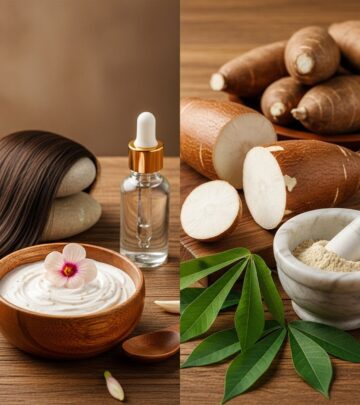2-Chloro-p-Phenylenediamine Sulfate: Use, Safety, and Regulations in Hair Dye Products
Comprehensive insight into the function, safety assessment, risks, and regulatory standards for 2-Chloro-p-Phenylenediamine Sulfate in hair dye products.

2-Chloro-p-Phenylenediamine Sulfate is a chemical ingredient widely recognized for its role in hair dye formulations, particularly in permanent hair coloring systems. This comprehensive article provides an in-depth look into its function, safety, health considerations, regulatory outlooks, and frequently asked questions related to its use in cosmetics.
What is 2-Chloro-p-Phenylenediamine Sulfate?
2-Chloro-p-Phenylenediamine Sulfate is a synthetic organic compound belonging to the class of aromatic amines. Its structure includes a benzene ring substituted with both an amino group and a chlorine atom, and it is commonly found as its sulfate salt in commercial applications. In cosmetics, this ingredient is primarily utilized as a colorant, enabling the effective dyeing of hair. It exists in various permanent oxidative dye formulations, where it acts as a precursor that generates the desired color inside the hair structure.
Function in Cosmetic Products
2-Chloro-p-Phenylenediamine Sulfate’s principal use in cosmetics lies in its ability to impart enduring, intense color to hair. Here is a summary of its key functions:
- Permanent Hair Colorant: Used in oxidative hair dyes, producing color inside the hair fiber for long-lasting effects.
- Precursor Reactant: Functions as a developing agent during the chemical reaction between couplers and developers in permanent hair dye formulations.
- Color Consistency: Enables a broad spectrum of shades depending on the formulation, making it suitable for various hair color products.
Hair dyes are categorized based on their operational mechanism. These categories include:
- Temporary (tints): Use direct dyes; wash out in 1-2 washes.
- Semi-permanent: Use nitro or direct dyes; last up to 8-10 washes.
- Permanent (oxidation dyes): Involve precursors like 2-Chloro-p-Phenylenediamine Sulfate, with the color developed inside the hair by chemical reaction, resulting in non-washable, intensive color.
Occurrence and Industry Use
This ingredient is almost exclusively associated with commercial hair dye preparations and is sometimes present in tints for eyelashes and eyebrows. It is not naturally occurring; instead, it is manufactured for industrial and cosmetic use. Internationally, it is formulated at concentrations up to 4.6% in oxidative hair dye systems, often combined with a developer such as hydrogen peroxide. Typically, commercial products contain much lower concentrations (<1%), particularly in markets with stricter regulations.
Cosmetic Product Types That May Contain 2-Chloro-p-Phenylenediamine Sulfate
- Permanent hair dyes
- Eyelash and eyebrow tints (less common and often restricted)
Safety Information
Safety Assessment by Expert Panel
The safety of 2-Chloro-p-Phenylenediamine Sulfate has been rigorously evaluated by the Expert Panel for Cosmetic Ingredient Safety (also known as the CIR Expert Panel). Significant findings include:
- Safe within Concentration Limits: Considered safe for use as a hair dye ingredient at concentrations below 1.0% based on current usage data.
- Ocular Irritation: In eye irritation studies, formulations containing 2.5% resulted in, at most, mild conjunctival inflammation.
- Skin Sensitization: In tests using both abraded and intact skin, it was not found to be a skin sensitizer.
- Carcinogenicity: Chronic toxicology studies and epidemiological data reviewed by the panel do not provide evidence that this compound is carcinogenic when used as intended in cosmetic products.
Thus, when restricted to current concentrations of use, the ingredient is generally deemed safe in hair dye formulations. However, as with all chemicals, certain precautions and regulatory controls are necessary.
Potential Risks and Precautions
- Skin Sensitization: Like other phenylenediamine derivatives, 2-Chloro-p-Phenylenediamine Sulfate is a potential skin sensitizer. It has been associated with allergic reactions such as itchy dermatitis, swelling, and ocular irritation, particularly when applied in sensitive areas like the eyebrows and eyelashes.
- Acute Toxicity: There is evidence indicating that the chemical and its sulfate salt may be acutely toxic following oral exposure, although these exposures are considered rare in ordinary cosmetic use.
- Eyelash & Eyebrow Use: Notably, some severe allergic reactions have been reported in patients using products intended for eyebrow and eyelash tinting, justifying more stringent regulations for these applications.
Adverse Reaction Symptoms
- Itchy dermatitis on targeted skin areas
- Redness, swelling of eyelids, or conjunctivitis upon eye exposure
- In severe cases, allergic contact dermatitis after repeated exposure
Safety Measures in Use
- Patch Testing: Prior to application, users are advised to conduct patch tests to identify possible allergic reactions.
- Clear Labeling: Products must carry warning labels about potential skin irritation and the necessity for preliminary skin testing before use.
- Avoid Eye Area: Strong directions to avoid use on eyelashes or eyebrows due to higher risk of serious eye injuries.
Regulatory Landscape
The regulatory status of 2-Chloro-p-Phenylenediamine Sulfate varies internationally:
| Region | Status | Key Requirements |
|---|---|---|
| European Union | Prohibited | Use in cosmetics prohibited under EU Cosmetic Regulation; not allowed in hair dyes or tints for eyelashes/eyebrows. |
| United States | Restricted | Permitted in hair dyes under 1% subject to labeling and safety assessments |
| Australia | Restricted/Controlled | Regulated by Poisons Standard; warning labels required; not allowed for eyelashes/eyebrows. |
| Global | Varies | Generally regulated with strict restrictions due to sensitization risk; use in industrial settings also reported |
Existing regulatory frameworks impose:
- Maximum allowable concentrations in finished products
- Mandatory labeling of risks and safety instructions
- Strict prohibition for use on eyelashes/eyebrows except in specifically allowed contexts
Label Warning Requirements (Sample)
- “WARNING – This product contains ingredients which may cause skin irritation to certain individuals. A preliminary test according to accompanying directions should be made before use. This product must not be used for dyeing eyelashes or eyebrows; to do so may be injurious to the eye.”
- “(Over) (Repeated) exposure may cause sensitisation.”
- “Avoid contact with eyes.”
- “Avoid contact with skin.”
- “Avoid breathing dust, vapor, or spray mist.”
Scientific and Toxicological Profile
- Structural Class: Aromatic amine, halogenated phenylenediamine derivative
- Mechanism: Functions as a color precursor, developing color only after the application of an oxidizing agent
- Dermal Absorption: Risk of systemic exposure minimized by restriction to external use and low concentrations
- Carcinogenicity: Chronic studies and human data have not established a link between use as intended and increased risk of cancer
- Acute and Subchronic Toxicity: May be acutely toxic at higher doses or improper exposure routes (ingestion, extensive skin application)
- Skin Sensitization: Noted as the primary risk in properly formulated hair products
- Ocular Contact: Only mild irritation at concentrations greater than those recommended for use in hair dye
Alternatives and Related Compounds
In light of regulations and sensitization risk, various alternative hair dye ingredients and colorants are used:
- Other Phenylenediamine Derivatives, including 2-methoxymethyl-p-phenylenediamine and 2-nitro-p-phenylenediamine
- Azo dyes (for temporary and semi-permanent formulations)
- Triphenylmethane and anthraquinone dyes (mainly for temporary coloring)
- Quinonimine dyes or non-aromatic amine-derived colorants with improved safety
Selection of coloring agents often depends on desired colorfastness, consumer demand, safety profile, and regulatory allowance in the target market.
Frequently Asked Questions (FAQs)
Q: What is 2-Chloro-p-Phenylenediamine Sulfate used for?
A: It is used as a colorant in permanent hair dyes and, less commonly, in eyebrow and eyelash tints (with restrictions in most markets).
Q: Is it safe to use hair dyes containing this ingredient?
A: When used as directed and at concentrations below established regulatory thresholds, it is considered safe for use in hair dyes by leading safety panels. However, users should always conduct patch tests and avoid using it near the eyes.
Q: Why is its use prohibited in some regions?
A: Precautionary bans, like in the European Union, focus on preventing sensitization, allergic reactions, and accidental misuse (especially for eyelashes/eyebrows), even though risk is managed in other jurisdictions through strict regulations.
Q: What are the side effects or risks?
A: The main risks are skin sensitization and allergic reactions, with rare but severe reactions reported in eyebrow/eyelash applications. Eye contact can cause irritation or, in severe cases, conjunctivitis.
Q: Are there safer alternatives for coloring hair?
A: Yes, many alternative dyes with lower sensitization risk exist, including derivatives with improved safety profiles and non-phenylenediamine-based colorants, as well as plant-based dyes for temporary coloration.
Key Takeaways
- 2-Chloro-p-Phenylenediamine Sulfate is a colorant for hair dyes.
- It is generally safe at low concentrations but may cause skin sensitization and allergic reactions in some individuals.
- Its use is tightly regulated or prohibited in various jurisdictions—always follow product instructions and regulatory advice.
Further Reading & Resources
- For more information about ingredient safety evaluations, see CIR and regulatory body reports.
- Consult product packaging and regulatory updates for the most current guidelines regarding cosmetic ingredients and potential allergens.
Read full bio of Sneha Tete











